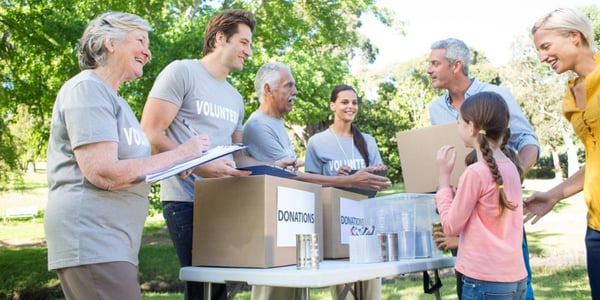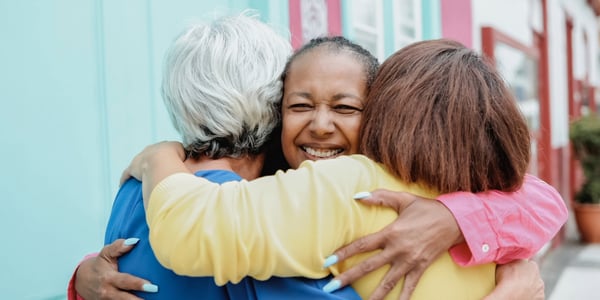The value of giving back goes far beyond dollars and cents. While financial contributions are...


The value of giving back goes far beyond dollars and cents. While financial contributions are...

Many retirees often find themselves stir-crazy with the amount of free time on their hands after...

Generosity, the act of giving freely and willingly without expecting anything in return, is a...

Generosity is a transformative force that can improve your life in numerous ways. Giving freely of...
How Communities Come Together to Support Each Other in Times of Crisis
In moments of crisis, whether due to natural disasters, pandemics, or economic downturns, the spirit of generosity and community support often shines brightly. While challenges can bring out fear and anxiety, they also reveal the best in humanity. Neighbors, friends, and even strangers come together to support one another, demonstrating the power of collective action and compassion. In this blog, we’ll explore various ways communities rally in times of crisis, highlighting inspiring stories and practical examples of generosity.
The Power of Immediate Response
When disaster strikes, the immediacy of the response can make a crucial difference. Communities often mobilize quickly to provide essential aid. After Hurricane Katrina in 2005, volunteers from across the United States flocked to New Orleans to help rebuild homes, distribute food, and offer medical assistance. This rapid response was critical in providing relief and a sense of hope to those affected.
Local organizations and grassroots movements frequently play a key role in these initial efforts. For instance, during the COVID-19 pandemic, community groups organized mask-making initiatives, food drives, and virtual check-ins to support vulnerable populations. These actions, though sometimes small in scale, collectively had a significant impact.
Grassroots Organizations and Mutual Aid
Grassroots organizations are often the backbone of community support during crises. These groups, formed by local residents, understand the unique needs of their community and can respond with targeted assistance. Mutual aid networks, which have gained popularity in recent years, exemplify this approach. These networks operate on the principle of reciprocal support, where members contribute what they can and receive help when needed.
One notable example is the mutual aid response during the early stages of the COVID-19 pandemic. In many cities, networks sprang up almost overnight. Volunteers delivered groceries and medication to those unable to leave their homes, provided financial assistance to those who lost jobs, and offered emotional support through regular phone calls and online forums.
The Role of Technology in Facilitating Generosity
Technology has transformed how communities come together in times of crisis. Social media platforms, crowdfunding websites, and communication apps have made organizing and spreading awareness easier. During the Australian bushfires of 2019-2020, social media campaigns raised millions of dollars for firefighting efforts and wildlife rescue. Similarly, crowdfunding sites like GoFundMe have enabled individuals and organizations to gather financial support quickly and efficiently.
Virtual communities have also provided a platform for sharing resources and information. Online forums and local community groups on platforms like Facebook and Nextdoor became hubs for organizing relief efforts, offering real-time updates, and connecting people in need with those who could help.
Corporate Responsibility and Philanthropy
Businesses and corporations also play a crucial role in supporting communities during crises through philanthropic measures. Corporate social responsibility (CSR) initiatives often include donations of money, goods, and services to aid disaster relief efforts. For example, in the aftermath of the 2010 Haiti earthquake, numerous companies contributed substantial resources to support recovery efforts. Tech companies provided communication tools, while logistics companies offered transportation and distribution services.
Additionally, some businesses adapt their operations to meet urgent needs. During the COVID-19 pandemic, several manufacturers retooled their production lines to produce masks, ventilators, and other essential medical supplies. This helped address critical shortages and demonstrated a commitment to social responsibility.
The Human Touch: Individual Acts of Kindness
While organized efforts are crucial, individual acts of kindness often have profound effects during crises. Small gestures–such as checking on an elderly neighbor, donating blood, or offering a meal to someone in need–can significantly impact a community's well-being.
One touching example is the global response to healthcare workers during the COVID-19 pandemic. People around the world showed their appreciation for frontline workers through various means, from clapping and singing from balconies to delivering meals and personal protective equipment. These acts of kindness provided much-needed moral support and demonstrated collective gratitude.
Long-Term Community Building and Resilience
Generosity during crises not only addresses immediate needs but also contributes to long-term community resilience. By addressing immediate needs and one another, generosity builds stronger social bonds and a sense of solidarity. This collective strength can enhance a community's ability to withstand future challenges.
For instance, the 2011 Tōhoku earthquake and tsunami in Japan led to the formation of numerous community groups focused on rebuilding and preparing for future disasters. These groups have played a crucial role in fostering a culture of preparedness and mutual support, making their communities more resilient.
Click here or the button below to learn more about fraud prevention at TopLine Financial Credit Union.
Challenges and Solutions in Coordinated Efforts
Despite the overwhelming positive impact of community generosity, coordinated efforts are not without challenges. Ensuring equitable distribution of resources, avoiding duplication of efforts, and maintaining momentum over time can be difficult. Effective communication and collaboration among different organizations and groups are essential to overcoming these obstacles.
One successful approach to coordination is the establishment of centralized hubs or coalitions that bring together various stakeholders. These hubs can streamline the distribution of resources, provide a platform for sharing information, and facilitate collaboration. For example, the United Way's 2-1-1 service in the United States connects people in need with local resources and services, helping to coordinate aid efforts.
Education and Empowerment
Education plays a vital role in empowering communities to support one another during crises. Training programs on first aid, emergency preparedness, and community organizing equip individuals with the skills needed to respond effectively. Schools, community centers, and online platforms can serve as venues for these educational initiatives.
Empowering local leaders and volunteers is also crucial. Leadership development programs can help identify and nurture individuals who can mobilize their communities in times of need. By building a network of trained and motivated leaders, communities can ensure a more robust and organized response to future crises.
Policy and Government Support
Government policies and support are vital in enhancing community responses to crises. Proactive measures such as emergency preparedness, financial assistance, and public-private partnerships can significantly bolster local efforts. For instance, during the COVID-19 pandemic, government stimulus packages provided essential economic relief, while partnerships with private companies facilitated the distribution of critical supplies. Additionally, inclusive policies ensure that aid reaches vulnerable populations, addressing disparities and promoting equitable recovery.
Community-driven advocacy often leads to meaningful policy reforms that improve crisis response and resilience. After the Grenfell Tower fire in London, grassroots efforts resulted in stricter fire safety regulations and increased scrutiny of building materials. By initiating collaboration between governments, businesses, and communities, we can create a more comprehensive and effective approach to crisis management, building a resilient society capable of facing future challenges with strength and unity.
The Importance of Mental Health Support
Crises often take a toll on mental health, making it essential to include psychological support in community response efforts. Providing access to counseling services, support groups, and stress-relief activities can help individuals cope with the emotional impact of a crisis. Community-driven initiatives, such as peer support networks and mental health first aid training, can help address these needs.
During the COVID-19 pandemic, many communities established helplines and online support groups to offer emotional support. These resources provided a lifeline for those struggling with isolation, anxiety, and grief, highlighting the importance of mental health in overall well-being.
Case Studies of Community Generosity
To illustrate the various ways communities come together during crises, let's explore a few case studies:
1. The Nepal Earthquake (2015)
In the wake of the devastating earthquake in Nepal, local communities, international organizations, and individual volunteers collaborated to provide relief. Local youth groups organized rescue operations and distributed supplies, while international aid organizations offered medical assistance and reconstruction support. This collective effort was instrumental in the recovery process, showcasing the power of global solidarity.
2. The Grenfell Tower Fire (2017)
The Grenfell Tower fire in London led to an outpouring of support from the local community and beyond. Volunteers provided food, clothing, and shelter to the displaced residents, while donations from around the world helped fund long-term housing solutions. Community groups also advocated for justice and policy changes to prevent similar tragedies in the future.
Crises are inevitable, but the way communities respond to them can make all the difference. The generosity and solidarity demonstrated during challenging times highlight the resilience and compassion inherent in humanity. Whether through immediate aid, long-term support, or individual acts of kindness, communities around the world continuously prove that they can rise above adversity together.
As you reflect on these examples, it's important to recognize that everyone has a role to play in creating a supportive and generous community. By staying informed, getting involved, and lending a helping hand, we can contribute to a culture of compassion and collective strength that will endure through any crisis.
Click here or the button below to open a TopLine Financial Credit Union certificate!Living50+